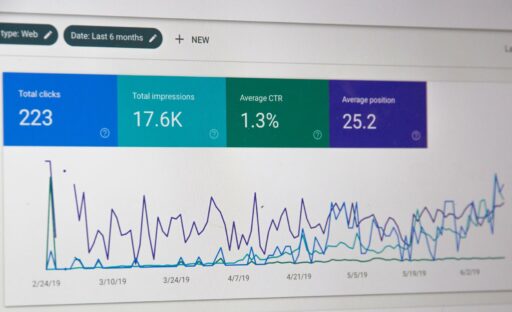Transform your website into a traffic generating machine that Google loves by following the steps in this guide to search engine optimisation (SEO).
If you have a website and you want to improve the traffic you get from Google without needing to worry about complex technical steps or confusing jargon, then you’re in the right place.
Remember: Google wants users the most relevant results for their search. The more relevant your content is to their search, the more likely your website will be number 1 on Google.
Search is the #1 driver of traffic to content sites, beating social media by more than 300%
– Source: Imforza
In this guide you’ll learn:
- Search optimising your website is not a guaranteed traffic generator
- The keywords you want aren’t always the right keywords to go after
- The number one secret to getting the right search traffic
Optimising Your Website is Not A Guaranteed Traffic Generator
The truth is that working on the search optimisation for your website is not a guaranteed source of traffic.
Perhaps more importantly, being top of any search engine never guarantees more sales and customers. After all, isn’t that the whole point of marketing anyway?
SEO leads have a 14.6% close rate, while outbound leads (such as direct mail or print advertising) have a 1.7% close rate.
– Source: SearchEngineJournal.com
Why Doesn’t SEO Always Work?
When SEO isn’t done right it can be the cause of wasted time, money and a lot of frustration for many businesses. They might might be ranking well for some keywords, but those keywords aren’t actually bringing in qualified traffic, leads or buyers.
When it comes to choosing keywords, it’s important that they are not too specific or too broad.
Keywords Are Too broad
If you’re a shoe store and you’re at the top of Google for the keyword “shoes”, you might think that this means more awesome traffic and more customers for sure!
A massive 1.5 million people every month search for the term “shoes”. Even if you captured 1% of that search market – that’s still 15,000 clicks to your site. Awesome! But wait – we’re missing an important piece.
What we’re missing here is the intent of the search.
Why are they searching for shoes in the first place?
Could it be that they want images of shoes?
Or maybe they want to buy or sell?
Are they browsing or getting ideas?
When using super broad keywords like this, there’s no indication of what they want and why they want to visit your site.
Broad keywords aren’t always productive because they can be really hard to rank for and there isn’t any real strategy behind them.
Keywords Are Too specific
A search for “Melbourne based health food shop that sells organic almonds” might capture your immediate geographic ranking and product, but how many people are actually searching for that?
With the SEO work we do for our clients Renegade Empire, part of our strategy involves focusing on a geographic area our client’s customers are in if they are tied to one (for example, Larry the Locksmith).
But it’s not always the case that we need to think local.
Being too specific could limit the number of people that are searching for your business. In the example of the health food shop, if you’re able to ship Australia wide, then it would be worth spending time researching an Australia wide keyword search term instead.
Often businesses are guilty of assuming that their customers know exactly what they’re looking for. Or, that the terminology you use is known by your customers.
Where People Go Wrong with SEO
The key to quality SEO is all about research research research.
Fortunately, it doesn’t take a search marketing genius and years of experience to spend a little time researching the right keywords for your business, it’s just that most people don’t know where to begin with keyword research.
A lot of the time, business make assumptions that they need to back up with actual evidence.
For example, many businesses focus their SEO effort on their business name. But realistically – do people actually search for your business name? Unless you’re Apple or Nike, they probably don’t.
Typically, people visit Google to help them solve a problem or they’re looking for a specific product.
Here are a few search question examples:
- How much should I spend on a bed?
- How do I clean an oven?
- What’s the best way to record a phone call?
- Where is the closest locksmith?
Understanding what your customers and users want to learn and know is exactly how you should be developing your SEO strategy.
Now comes the tricky part – actually working on your site to build your search engine rankings.
It’s not about complex SEO metadata or tricks like writing tons of keywords into every page and blog post.
The key to improving your search engine ranking: create content that answers the questions that people are searching for.
It’s hardly revolutionary, but it works.
The best part is that many businesses just don’t know how to create content (I’ll show you further on in this guide) so it’s very likely that your competitors are not doing this, which will give you the competitive advantage.
Many marketers talk about the specifics of algorithms, content updates, spider-bots etc, but there’s no need for many business owners to worry too much about this. All you need to do to focus is assume that search engines want to get the most relevant articles, posts and products in front of an audience.
Your job is to make content that your customers want to read when they find you.
“Successful SEO is not about tricking Google. It’s about partnering with Google to provide the best search results for Google’s users.”
– Phil Frost, Main Street ROI
Businesses that stick to the old SEO trick of “stuff a post with keywords and use metadata” will get left behind. SEO isn’t about tricking Google or working with spiders – it’s about creating content that wants to get read by your customers.
How to Create Good SEO Content
Content Structure
Having a consistent blog post structure for your posts is a really fast way to build content that helps to do 3 things:
- Easy to read and digest – making it easier for traffic and customers to consume and stay longer.
- Easier to write – make it past that blank white screen of writer’s block and write blog posts fast.
- Easier for search engines to crawl – rank for articles faster in search engines like Google and Bing.
The biggest problem that we see is that businesses just don’t create this content. They get overwhelmed by all the different things they could write about, they have no plan in place to produce the content and they just get busy with other things.
This is a big opportunity for businesses that are willing to put in the time and effort to create content.
To help give you the upper hand, here’s our simple blog post formula that we use to create content:
6 Step Blog Post Formula
1. Summary / Promise – use a short sentence to introduce the post and promise to the reader what they will get from reading the content. For example “in this post we talk about TOPIC” or “if you read this you’ll be able to RESULT”.
2. Quote – search the internet for a quote to use relating to what you’re talking about. There’s always something written somewhere that you can quote and use. You could also link back to the original article for some sweet SEO gains and to form a relationship with the website or person that is the source of the quote (let them know when you publish the article).
3. Key Takeaways – List the 3 key points that you’re covering off in your article. You can simply list them as bullet points to make it nice and easy for the reader to know exactly what they will get from this content.
4. Key point 1, 2, 3 – write a few paragraphs explaining the top 3 learning points for your topic. Give answers, show solutions and explain how to get results. TIP: If you’re struggling with this, you can break it down even further by writing about 3 key points within each of the 3 key points.
5. Conclusion – Write a brief summary. The easiest way is to highlight your favourite point in the blog and turn an objection.
As an example (a purposefully boring one): “My favourite part about cleaning an oven is that it’s easier than people think. You can just leave the chemicals to work and you’re away! I know a lot of people say they haven’t got time to clean like that, but what we’ve found is if you just set aside half a day, it’s done sooner than you think and the results are amazing.”
Yes, cleaning an oven is not the most riveting topic. Yes, people search for information about how to clean an oven. Yes, you can write content to get traffic from these searches. And yes, businesses can and do monetize this kind of traffic 🙂
And yes, businesses can and do monetize this kind of traffic 🙂
6. Next steps – Give next steps if they want to take it a step further. One of my favourite lines is, “if you’re serious about [this topic], then you need to… [perform this action]”, then give an email address, a phone number, a lead magnet or a something for them to follow up with.
Create Content Regularly
Posting regular content is key to building trust with search engines and your customers alike. A posting schedule is easier to stick to when you’re writing regular content. We’ve created an easy to follow content production calendar below that you can implement in your business.
We find writing two blog posts a week and only publishing one is a great way to give yourself some space when you really can’t write anything (it happens to everyone and it’s better to have content in the bank ready to go than being stuck looking at a blank page!).
Here’s an example of how to structure your content writing:
Monday – brainstorm 5 ideas to write about. Common questions, things they should know, etc. If you have a few people on your team, ask them to brainstorm with you.
Tuesday – Write out the structure for two blog posts. Use our framework above.
Wednesday – Write the first post.
Thursday – Publish a post.
Friday – Write the second post and schedule it for another time.
Choosing Blog Topics
Choosing topics to write about is probably the easiest part of creating content. Here are 3 main areas to find ideas:
- Google your own topics and industry and look at what other businesses are writing content
- Search forums, groups and message boards for questions that your customers are asking. (LinkedIn, Facebook and Quora are great for this)
- Brainstorm ideas that you want to talk about. Think of a few broad topics and then write down more specific titles and sub-topics for blog post ideas
We actually find it helpful to not keep everything we think of. Whenever we brainstorm 5 (or 50) ideas, whatever we haven’t written that week, we’ll discard. If it’s really a good idea, we’ll think of it again, or come back to it.
Summary
So there it is, the truth about improving website search engine rankings is writing content that people are searching for and actually want to read. To create captivating, informative content that naturally mentions your brand and can generate referral traffic is not an easy task.
Of course, there’s a bit more to it from a technical perspective, but if you’re getting the content creation side of it right, then you’re going to be ahead of the 90% of businesses that aren’t doing this.
Pro tip: make sure to update and submit your new website sitemap every time you publish new content so Google knows the content is there (if you’re using software like WordPress, you can automate this process easily with tools like Yoast SEO).
Our favourite part about this is that SEO doesn’t have to be hard or require an expert team to get results. If you’ve got a process and a structure, you can rank your content in search engines quite quickly. Just keep in mind that you need to commit to producing relevant content and the results will pay off.
If you’re not ready to write and create content regularly, then you’re not going to get the results you want and you’re leaving the opportunity open to your competitors.
Next Steps
If you’re serious about getting more traffic from your SEO then you need to start creating content. Use the guide listed in our article and start creating useful content for your business and see your search traffic grow.
What content do you create for your website?
What tips do you have for creating content for your audience?
Or questions about creating content?
I’d love for you to let me know below in the comments!
Author

Simon Kelly
Simon Kelly is the CEO and Head of Growth at SGD. Simon started his first web agency in 2009 which he merged with the SGD team in 2023. With a strong background in digital strategy and a history of working with fast-growing Australian companies, including CyberCX, Envato and Agency Mavericks, he's passionate about using ethical digital marketing that delivers business value. Simon's experience includes coaching digital agencies, running digital marketing workshops, driving growth and excellence within the SGD team.
Unlock Weekly Insights To Improve Your Website
Want to improve your website and digital marketing? Sign up to Marketing Monday for practical, up-to-date strategies on SEO, Google Ads, and website performance—delivered weekly.
No fluff, just results-driven advice. Unsubscribe anytime.
Next Article
WordPress and eCommerce
September 30, 2017Start a Project









